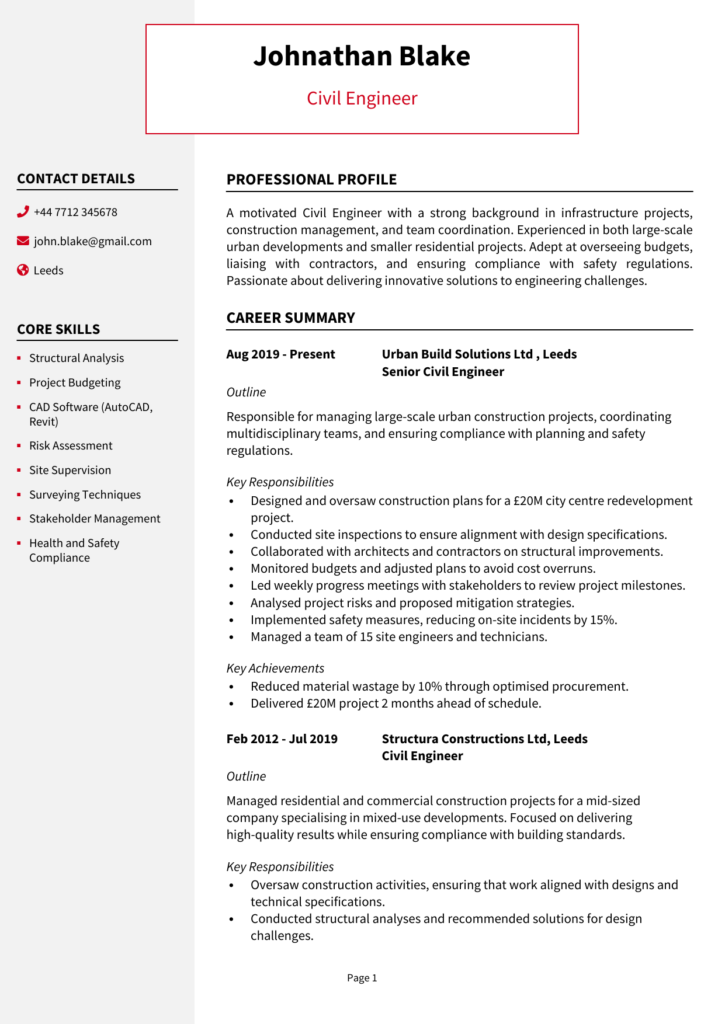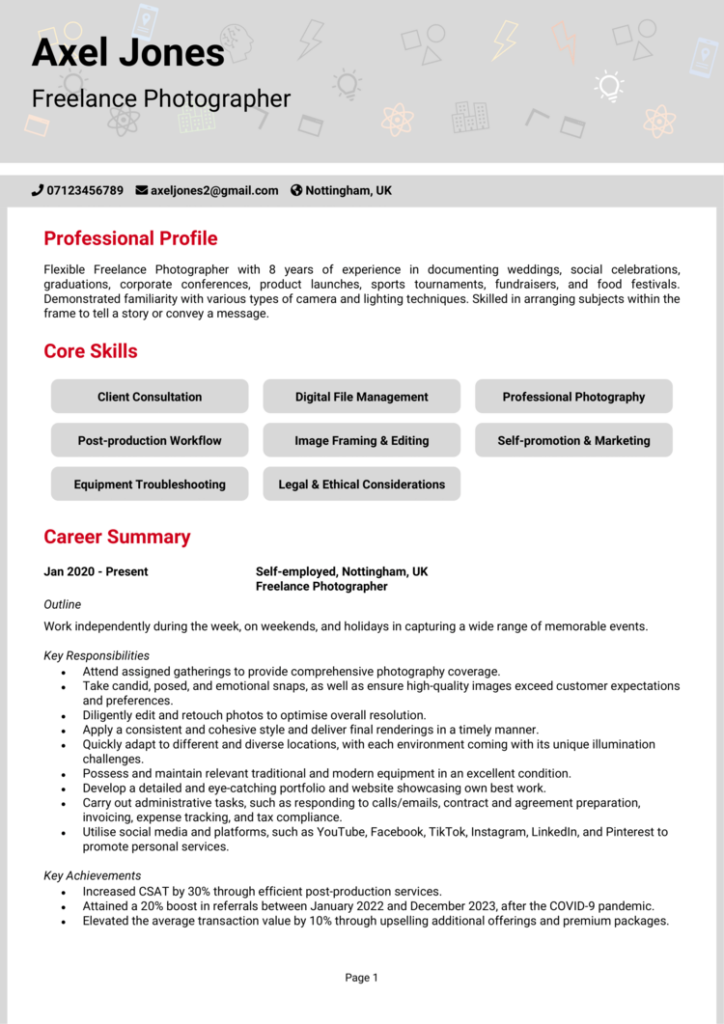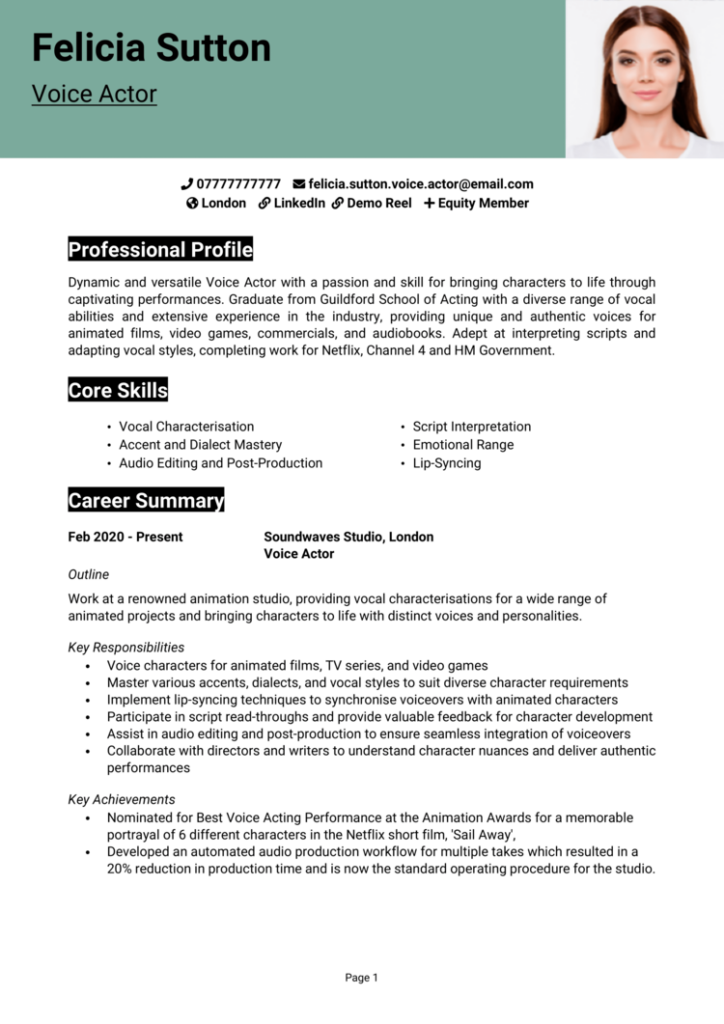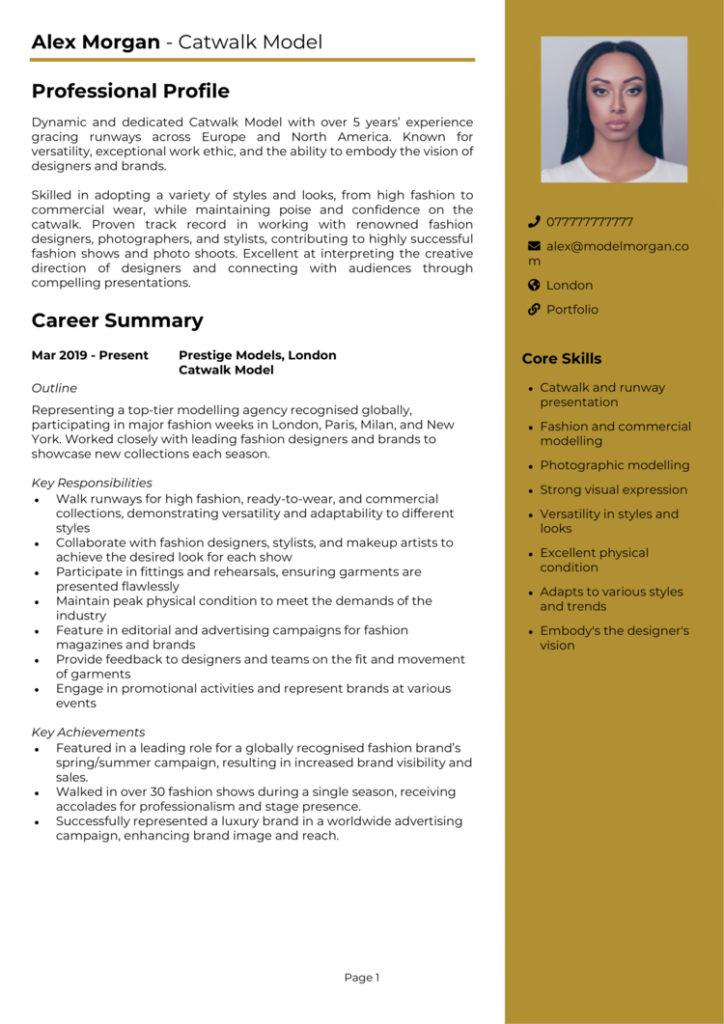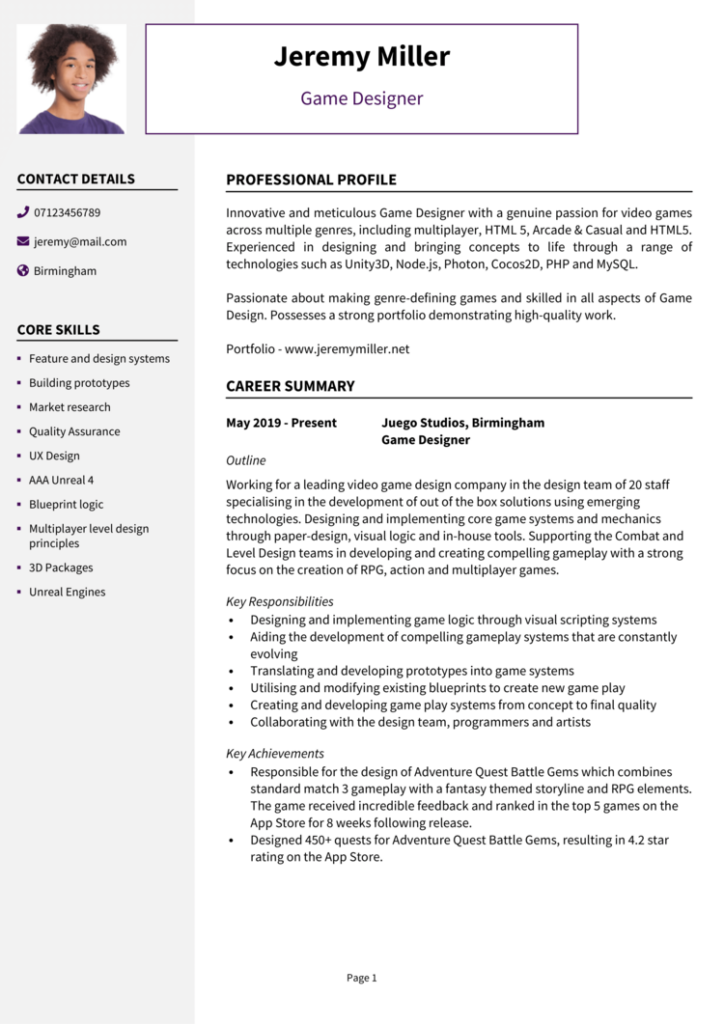In a creative field, your CV is your first opportunity to showcase your design skills and innovative thinking before recruiters read a single word.
These 6 creative CV templates and 6 CV examples from creative roles show you how to blend creativity with professionalism, helping you make a lasting impression and land the role you deserve.
Creative CV templates
These eye-catching templates will let you show off your design skills and personality.
Creative CV examples
Take inspiration from these creative CV examples which employ unique design choices.
How to layout a creative CV
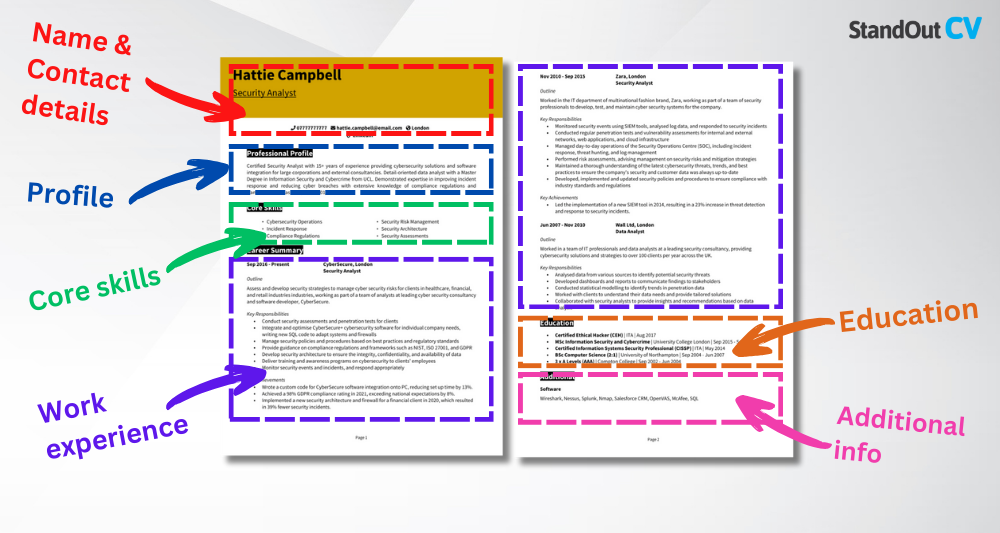

Even with your exceptional creative skills, a poor CV structure will cost you the job opportunities you deserve. A creative CV should follow the right layout to make sure recruiters can find the information they need to send you an offer.
- Name & contact details – Place personal details at the top so recruiters can reach you easily. Use a bold font for your name, a tailored job title, and provide a professional email and phone number. Include your city, a portfolio link, and relevant social media to showcase your work. Subtle icons can add a sleek touch.
- Professional profile – You should blend your professionalism with creativity in 4-6 sentences. Your CV profile (or personal statement, for junior candidates) should highlight your creative strengths, notable experience, and design philosophy, and convey the value you’d bring to the role.
- Core skills – Provide a mix of technical and soft skills relevant to your field. Include software expertise (e.g. “Adobe Creative Suite”), design fundamentals (“branding,” “typography,” “UX/UI“), and collaboration skills.
- Work experience – Show how you apply your creative skills in real-world settings. For each role, outline the company or project, list responsibilities using strong action verbs, and include measurable achievements. Numbers make your impact tangible, so highlight key results where possible.
- Education – Keep it concise, listing the qualification, awarding institution, and study dates. If you lack formal education, focus on relevant workshops, certifications, or self-taught skills. Candidates with less experience can expand on specific courses or degree modules related to the job.
- Additional info – Demonstrate your passion beyond work. List awards, professional memberships, freelance or personal projects, and hobbies that complement your creativity, such as photography, scriptwriting, or music production. This section adds personality and depth to your CV.
Tips for writing a creative CV
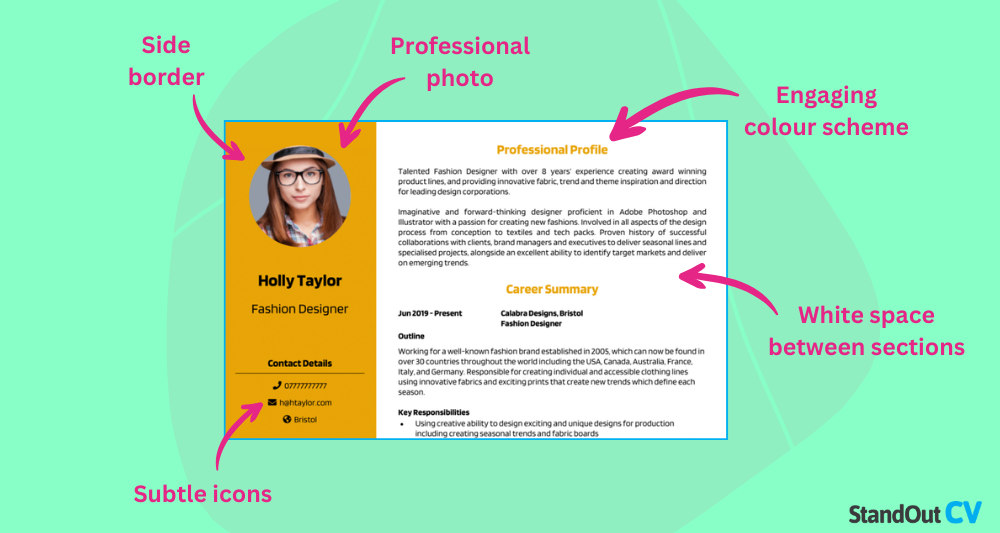

A well-designed CV isn’t just about what you say – it’s about how you present it. The right formatting can make your CV more engaging, visually appealing, and easier to read, all while showcasing your creativity to employers.
But there’s a fine line between stylish and overwhelming, so every design choice should enhance – not distract from – your content.
These 5 subtle formatting tips will help write your CV so it stands out from the rest.
Add a side border to your CV
A side border is an easy way to make your CV look stylish without going overboard. It makes your CV seem like less of a block of text.
You can do this in Word by going to Design > Page Borders and selecting a Left Border. Stick to professional but creative colours like a muted pastel (steer clear from garish neon colours – recruiters will thank you).
It’s a simple trick that makes your CV stand out, without distracting from your content. Remember: less is more when it comes to creative, professional layouts.
Include some icons
You can easily add a little bit of flair to your CV by including some icons alongside key points. For example, a phone icon alongside your mobile number, or an emoji beside one of the main headings.
You can add icons in Word by going to Insert > Icons and searching for symbols like a phone, email, or LinkedIn logo. They help break up text-heavy areas and guide the reader’s eye effortlessly.
Keep them minimal, use a cohesive style, and avoid cluttering the page – icons should complement your design, not take over the page.
Use some nice colours
A splash of colour will make any creative CV more engaging – but you don’t want it looking like a crayon box exploded on the page.
Stick to one or two accent colours and use them sparingly. A pop of deep blue, muted green, or any calm pastel will add personality while keeping things professional.
Avoid neon or overly bright tones, which can be harsh on the eyes – remember, you want your CV to be as easy and pleasant to read as possible.
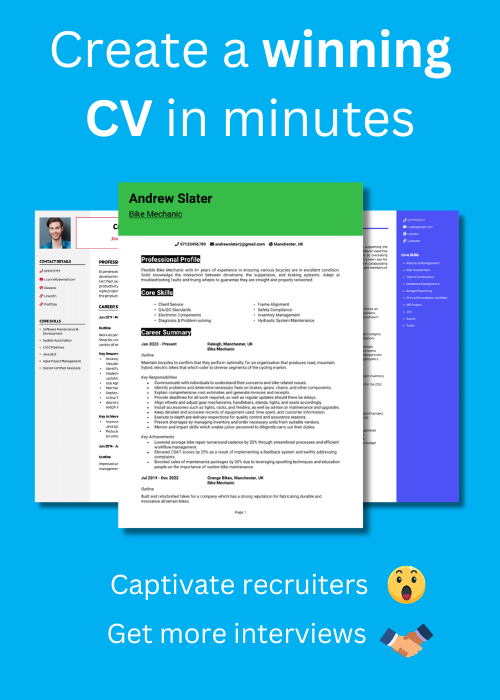

Have a photo
Including a picture of yourself on your CV can give it a personal touch – especially in creative industries where branding yourself matters. A high-quality, well-lit headshot can help you stand out and make your application feel more human. Keep it professional, though – no selfies, filters, or holiday snaps!
Stick to a clean, neutral background and ensure the image isn’t overpowering the content. When done right, a photo can make your CV more memorable while maintaining a sleek, modern feel.
You might also consider a personalised simple logo or monogram of your initials – nothing fancy, just a subtle touch. You could make that in Word with Insert > Shapes, or use a free tool like Canva.
Make use of white space
As a creative person, you know that white space isn’t just empty space – it’s a powerful and often overlooked way to each page of your document feel clean and easier to read.
Overcrowding your CV with text and design elements can overwhelm recruiters, making key details harder to find. Instead, allow for generous margins, spacing between sections, and clear breaks between paragraphs. This creates a sense of balance and guides the reader’s eye naturally.
Think of white space as breathing room for your content – it keeps things structured, professional, and visually appealing while ensuring your creative flair doesn’t overshadow clarity.






